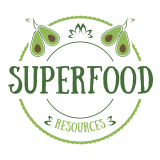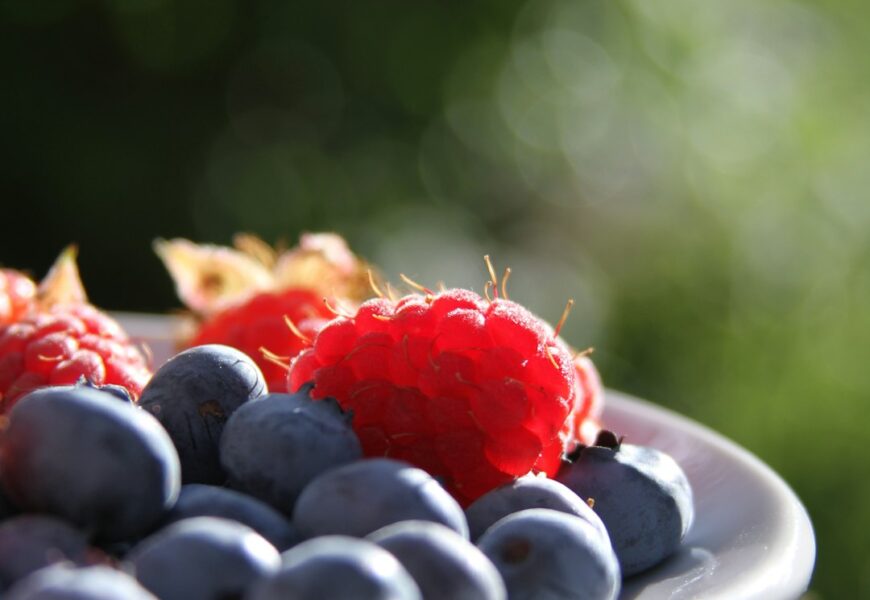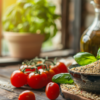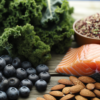Beginner’s Guide to Superfoods: Where to Start and What to Know
Introduction
Welcome to the vibrant world of superfoods! If you’re just starting your journey toward healthier eating, you might be wondering what exactly superfoods are and why they’re so beneficial. Simply put, superfoods are nutrient powerhouses that pack large doses of antioxidants, polyphenols, vitamins, and minerals. Eating them can lead to numerous health benefits including enhanced energy, improved mental clarity, and better overall health. Let’s dive into exploring some easily accessible superfoods and learn how to seamlessly integrate them into your daily diet.
What are Superfoods?

Definition of Superfoods
Superfoods are not a specific food group, but rather a term used to describe foods that are particularly rich in nutrients and beneficial for one’s health. They are typically packed with vitamins, minerals, antioxidants, and other nutrients that can significantly enhance our overall health. Superfoods come from various food groups, including fruits, vegetables, grains, and proteins, each offering a unique set of health benefits. The idea is that these foods provide more noticeable health benefits than the average food item due to their high nutrient compositions.
Benefits of Incorporating Superfoods into Your Diet
Incorporating superfoods into your diet can have a myriad of health benefits. Firstly, the high levels of antioxidants found in many superfoods help combat oxidative stress and can reduce the risk of chronic diseases such as heart disease, Alzheimer’s, and some cancers. Superfoods can also promote a healthy digestive system due to their high fiber content, which aids in digestion and maintains regularity. Additionally, the variety of nutrients found in superfoods can boost the immune system, enhance energy levels, and improve skin health, giving you a natural, healthy glow. Embracing superfoods as part is an excellent step towards improved health and well-being.
Getting Started with Superfoods
Identifying Common Superfoods
When you’re just starting to explore the world of superfoods, knowing what items to look for can make all the difference. Common superfoods include:
– Berries: Such as blueberries, strawberries, and raspberries, which are high in fiber, vitamins, and antioxidants.
– Leafy Greens: Like spinach, kale, and Swiss chard, which offer abundant vitamins A, C, E, and K.
– Nuts and Seeds: Including almonds, chia seeds, and flaxseeds, known for their healthy fats and protein.
– Ancient Grains: Such as quinoa and amaranth, which provide high protein and fiber content.
– Green Tea: Known for its antioxidant properties.
Starting with these foods can help simplify your introduction into the world of superfoods.
Understanding Nutrient Density and Diversity in Superfoods
Nutrient density refers to the amount of nutrients a food contains in relation to its calorie count. Superfoods are often incredibly nutrient-dense, meaning they deliver a large amount of nutrients for relatively few calories. It’s not just about packing in any nutrients, but a wide variety, hence the importance of nutrient diversity. Eating a diverse range of superfoods helps ensure you get a balanced mix of essential nutrients necessary for optimal health. This approach supports various body functions and can help prevent nutritional deficiencies.
Buying and Storing SuperSoods
Purchasing and storing superfoods can be easy once you know what to look for and how to keep them fresh. When buying superfoods, always opt for organic when possible to avoid pesticide residues and to ensure peak nutrient content. For fresh produce like berries and leafy greens, refrigeration is crucial, and they should be eaten within a few days of purchase. Nuts, seeds, and grains can be stored in a cool, dry place and are typically long-lasting. For items like green tea, ensure they are stored in a cool, dry place away from direct sunlight to maintain their potent antioxidant properties. Proper storage helps maintain the health benefits of these power-packed foods, making them a potent tool in your superfood toolkit.
How to Incorporate Superfoods into Your Diet
Smoothie recipes with superfoods
Integrating superfoods into your diet can be both delicious and effortless, especially with smoothies. Start by choosing a base like almond milk, coconut water, or plain yogurt, and then pile on the superfoods! A classic beginner’s choice could be a blend of spinach, a small handful of blueberries, half a banana for natural sweetness, and a tablespoon of chia seeds or flaxseeds for an omega-3 boost. For an extra punch, add a scoop of protein powder or a teaspoon of spirulina. These ingredients not only blend well but also pack your smoothie with antioxidants, proteins, and essential vitamins.
Superfood salads and bowls
Salads and bowls offer a wonderful canvas for a variety of superfoods. Begin with a base of leafy greens like kale or spinach, known for their dense nutrient content. Top this with quinoa or farro for a hearty texture. Add sliced avocado for healthy fats, toss in some pumpkin seeds for crunch, and don’t forget the berries or pomegranate seeds for a pop of flavor and antioxidants. For dressing, a simple vinaigrette made with olive oil and lemon juice can enhance the flavors while adding another layer of nutrients.
Snack ideas featuring superfoods
Snacking on superfoods is an easy and effective way to boost your nutrition between meals. Try kale chips baked with a drizzle of olive oil and a sprinkle of sea salt, or raw nuts and seeds that can be paired with dried goji berries or a small piece of dark chocolate. For a quick and nutritious snack, smear almond butter on apple slices and sprinkle with hemp seeds or cinnamon. These combinations are not only satisfying but also beneficial in providing high levels of fiber, protein, and essential fatty acids.
Superfoods for Different Health Goals
Superfoods for boosting immunity
To enhance your immune system, focus on superfoods rich in vitamins C and E, antioxidants, and zinc. Oranges, kiwis, and strawberries are great sources of vitamin C, while almonds and sunflower seeds will provide vitamin E. Incorporating garlic and ginger into your cooking can also help fortify your immune response due to their natural antiviral and antibacterial properties. Additionally, a regular intake of green tea can boost antioxidant levels and support overall immune health.
Team with more superfoods for weight management
When it comes to managing weight, superfoods that are high in fiber and protein can help you feel fuller longer, reducing the urge to snack excessively. Incorporate avocados and black beans into your meals for a great source of fiber and protein. Berries, especially blueberries and raspberries, are low in calories but high in fiber. Using cinnamon can help regulate blood sugar levels, potentially decreasing hunger cravings. Combining these foods with regular physical activity can create an effective weight management plan.
Superfoods for glowing skin
For glowing skin, look for superfoods high in antioxidants and healthy fats. Avocados, rich in both, can be eaten or applied topically as a moisturizing mask. Walnuts and chia seeds offer omega-3 fatty acids that help maintain skin’s moisture barrier. To protect your skin from environmental damage, load up on colorful vegetables like bell peppers and carrots, which are high in vitamin A and C. Regularly consuming these superfoods can help nourish your skin from the inside out, promoting a healthy, radiant complexion.
Planning Your Superfood Grocery List
Embarking on your superfoods journey requires some savvy planning, especially when it comes to what you put in your cart. A well-thought-out grocery list not only helps you navigate the store efficiently but also ensures that you’re incorporating a variety of nutrients into your diet without breaking the bank.
Budget-friendly superfoods
Contrary to popular belief, superfoods don’t have to dent your wallet. Many of them are surprisingly affordable and still pack a powerful nutritional punch. Consider stocking up on:
– Quinoa and oats: Great for breakfast or as a side, both offer protein, fiber, and essential minerals.
– Frozen berries: Often cheaper than their fresh counterparts, freezing preserves their nutrients.
– Spinach and kale: These leafy greens are versatile and loaded with vitamins A, C, and K.
Equipping your pantry with these items ensures you’re always ready to whip up a nutrient-packed meal without splurging.
Seasonal superfoods to look out for
Eating seasonally is another excellent way to enjoy nutritious, flavorsome foods without overspending. Each season boasts its own variety of superfoods:
– Spring: Asparagus and strawberries come into their prime, offering plenty of vitamins and antioxidants.
– Summer: Avocados and blueberries are not only delicious but are also rich in heart-healthy fats and essential nutrients.
– Fall: Pumpkin and sweet potatoes are high in beta-carotene, which promotes healthy vision and skin.
– Winter: Citrus fruits like oranges and grapefruits are packed with vitamin C, perfect for boosting the immune system during cold months.
By paying attention to seasonality, you can enjoy the freshest produce and keep your menu exciting.
Tips for meal prepping with superfoods
Meal prepping can seem daunting, but incorporating superfoods makes it worth the effort. Here are a few tips:
– Batch cooking grains: Cook grains like quinoa or brown rice in large quantities to use as a base for meals throughout the week.
– Roasting vegetables: Roast a variety of vegetables like broccoli, carrots, and Brussels sprouts. They make great additions to meals and snacks.
– Smoothie packs: Prep and freeze ingredients for smoothies—like spinach, kale, and berries—in individual servings for a quick, nutrient-dense breakfast or snack.
Superfood Myths Debunked

While superfoods are undoubtedly beneficial, there are several myths surrounding them that can lead to unrealistic expectations. It’s important to approach superfood trends with a critical eye.
Addressing common misconceptions about superfoods
One common myth is that superfoods can cure diseases. While they do provide essential nutrients that support health, superfoods are not magic cures and should be part of a balanced diet. Additionally, the term “superfood” is more marketing than science. Most dietitians assert that labeling certain foods as “super” can mislead consumers about the overall importance of a varied diet.
Understanding the limitations of superfoods
Superfoods are powerful, but they aren’t the solution to all health issues. Over-reliance on them can lead to nutritional imbalances if other food groups are neglected. It’s crucial to incorporate a wide range of foods in your diet to meet different nutritional needs. Understanding that superfoods are just one part of a healthy lifestyle will help you make smarter dietary choices overall, avoiding the pitfalls of trendy but limited diets.
Conclusion
Incorporating superfoods into your diet doesn’t have to be daunting. Start with a few well-known superfoods that are easy to incorporate and progressively explore more exotic options. Remember, balance is key in any healthy diet – superfoods are powerful, but they work best alongside a variety of other nutritious foods. Keep it simple, enjoyable, and tailor your choices to what feels best for your body. Happy eating, and here’s to your enhanced health and vitality with superfoods!










